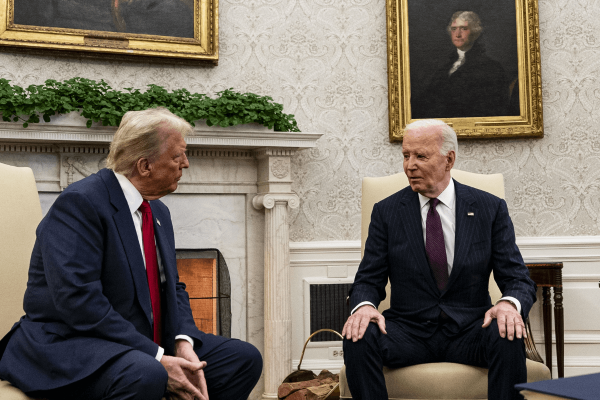Disability justice is my passion, but I wonder sometimes if we even know what justice is anymore. When I speak openly about crimes committed against my body — when an exchange of money bought permission from my father to rape me — there’s always at least one comment asking if justice was done. The commenter is asking if the perpetrators were charged or served time. But that isn’t justice; that’s consequence.
Justice is never being raped in the first place. Anything else is a different flavor of injustice, some more palatable than others.
When I discuss disability justice, I start with the stories of my sexual assault history for two reasons. First, I don’t have to explain what is unjust about what was done to me; this is universally accepted. Second, stories of sexual violence cannot be separated from the discussion of disability justice, for reasons both personal and systemic: I live with physical disabilities caused by injuries during assaults, and more broadly, disabled people are 2.5 times more likely to experience any kind of assault. And those with intellectual disabilities are seven times more likely to be sexually assaulted than those without intellectual disabilities.
Our basic understanding of injustice and disability starts off flawed. Consider how we can separate the discrimination from the identity with other systems of oppression. We see racism as injustice, but we don’t liken race itself to injustice. We see homophobia as injustice but being gay isn’t injustice. Misogyny is injustice, but womanhood isn’t.
Yet historically we have treated the presence of disability itself as bad or wrong or unjust. The disciples asked in John 9:2 who had sinned – the blind man or his parents – to cause his visual disabilities. In the history of the church, disabling mental illnesses and social disabilities have only recently been treated as something more than spiritual malaise, previously assumed to be literal demons or embodiments of sin itself.
At some point or another, majority culture has described every marginalized group as bad – being black, being female, being gay, being immigrant, being other than the norm in any other way – but we have learned and are learning that our judgment is the problem rather than these identities themselves. We must learn the same for disability.
Ableism is the problem. Disability is the identity. Ableism is bad. Disability is not. Ableism is unjust. Disability simply is.
So, what is disability?
I get a lot of questions about what disability is. We have tried to define it throughout history, and we’ve never found a universal description. Among other ills, colonialism ushered in the idea of disability as we know it now. This passage from A Disability History of the United States by Kim Nielson explains the shift:
Indigenous scholars and activists Dorothy Lonewolf Miller (Blackfeet) and Jennie R. Joe (Navajo) suggest that some indigenous nations have defined what might be called disability in relational rather than bodily terms. In indigenous cultures, “disability” occurred when someone lacked or had weak community relationships. Though individuals might experience impairment, disability would come only if or when a person was removed from or was unable to participate in community reciprocity.
This indigenous perspective on disability is the way Jesus treated disability. Yes, Jesus healed people, sometimes from disabling conditions, but that wasn’t the greatest benefit of healing for them. He acknowledged their personhood in a culture treating them as less or other. Then the healing was less about fixing the person – because people don’t need fixing – and more about fixing the ills of exclusion and dehumanization. The outcome of each healing narrative was the person’s restoration to society in a culture in which disease or disability often meant a disconnect from people, resources, and care.
We all need both an acknowledgement of inherent personhood and a place within the larger community to live, to thrive, and to understand what it means to be human.
Our present culture creates unique problems for our understanding of ability and disability. Two deeply held values in Western culture are independence and productivity. But every definition of disability involves a need for interdependence and potentially a different form, process, or pace of productivity.
The federal definition of being disabled, from 42 U.S. Code § 12102, is a person who “(1) has a physical or mental impairment that substantially limits one or more major life activities, (2) has a record of such an impairment, or (3) is regarded as having such an impairment.” Major life activities are listed explicitly in the law in broad strokes: “caring for oneself, performing manual tasks, seeing, hearing, eating, sleeping, walking, standing, lifting, bending, speaking, breathing, learning, reading, concentrating, thinking, communicating, and working.” Major bodily functions are included too.
This means that disability is more than wheelchairs. This means that mental health conditions and chronic illnesses can be disabilities. This means disability is far more inclusive than we often acknowledge. This means disability isn’t about othering but rather about engaging in the activities of life. This means disability isn’t an abnormality but rather a normal part of the human condition, presenting in different ways in different people.
What makes us human? This is the question. If it’s rationality, then where do we set the bar for not being rational enough? If it’s independence, then what degree of self-sufficiency is required of us? If it’s productivity, do I have to make a certain income or offer a specific project or do some elaborate cosmic show-and-tell to prove my personhood?
If our definition of being created in the image of God is based in independence, rational thought, or productivity, then those things are what we worship. Those have become our gods. We are no longer talking about people made in the image of God but rather a false god of capitalism made in the image of us.
What does disability justice look like?
Disability justice is the full affirmation of the personhood of disabled people and the full belonging of disabled people as part of the community. Anything short of that is injustice.
Pretending that disability justice doesn’t matter is injustice, too often perpetuated by those who declare justice to be crucial for other marginalized groups. Inaccessible justice movements aren’t just, after all.
Conversations about ableism and disability justice are new to many abled people because disabled people historically weren’t seen. The structures and systems in the U.S. made sure of it: Separate classrooms in schools for abled and disabled students, inaccessibility in public spaces, and largescale institutionalization of disabled people kept disabled people and the injustices we experience hidden from the larger public until recently.
It was only 1990 that the Americans with Disabilities Act passed, and every year legislative efforts are introduced (sometimes successfully) to weaken its protections of disabled people’s civil rights, most recently through eroding access to healthcare which is dangerous for everyone but too often deadly for us disabled people.
It was not until 1999 that the U.S. Supreme Court declared that disabled people have the right to receive state-funded services from within their communities rather than from inside institutions. Before this Olmstead decision, disabled people could be institutionalized without cause and without consent.
Please, pause for a moment to sit with that truth. June 22, 1999 – only 20 years ago – our country decided that we disabled people had the right to belong in the community. I am a millennial, but I was in high school before the U.S. gave me the legal right to exist outside of an institution.
We don’t know what disability justice is because we haven’t begun to reckon with our history of injustice. We don’t know about disability injustice because until very recent history, disabled people were largely segregated from the abled population. We don’t know about disability injustice because we don’t know disabled people.
We don’t care about justice unless we care about people. We can’t care about people until we see them and know them. Seeing and knowing people is relational. Our country used to be strictly organized so that relationships didn’t develop between unrelated abled and disabled people. The U.S. legal system declared 20 years ago that disabled people belong here.
It’s time that we all acknowledge that and, even more, act like we believe it.
Got something to say about what you're reading? We value your feedback!






